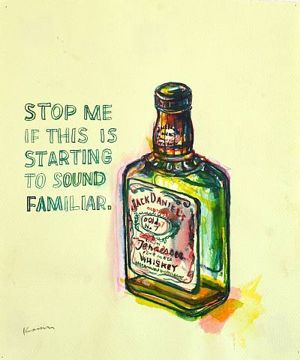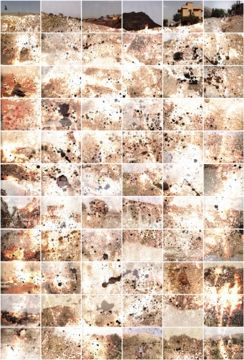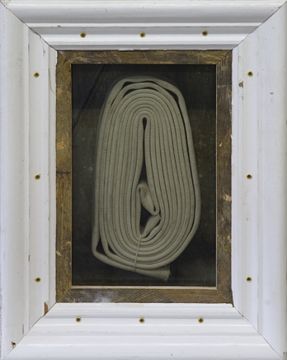A long stroll and purposefully slow visit to the Armory Show last week opened my eyes to quite a bit.
In addition to being exposed to new artists (my main reason for attending) and a futile attempt at spotting gallery exhibition trends (Lots of neon? Painting is back? And besides large C-prints, could fine art actually be getting smaller?), it was also a chance to see how my own work with students is informed, or can be informed, by work being made by artists today. In some ways mega art fairs like this allow contemporary art educators an opportunity to check out how the curricula we teach stacks up against what is happening in the present- at least in the galleries (for some of what’s happening on the street, see the February 23rd post Graffiti in the Classroom with an excellent series of comments between Nettrice Gaskins and Ben Street!).
Looking at Curtis Mann’s work, Sieve, featured in the Kavi Gupta booth, I started to reflect on teaching students about collage and mixed-media. Similar to Mann’s work included in the 2010 Whitney Biennial, the piece contained fragments of scenes that were erased or hidden through a process where he protected some parts of the photos with varnish and whitewashed others with bleach. I thought about how we, as art educators, often get kids to do visually captivating things through collage but often it simply stops there: pleasurable surrealistic tricks. Here I was faced with Mann reflecting the destructive and manipulative nature of our current world climate through doing some of the very same to the images he has chosen for his work- and yet it all comes together, even compositionally. The work featured at the 2010 Whitney Biennial, After the Dust, Second View (Beirut), was an arranged a grid of snapshots of the 2006 war between Israel and Hezbollah. While the final work gives the viewer the essence of an explosion that just took place, the piece is as much about not knowing what’s next in that few seconds of calm.
Also showing at Kavi Gupta was Theaster Gates. Ever since Kelly Huang’s interview with Gates on the Art21 blog in 2009 I have been hoping to get a look at some of his smaller-scale work. I was definitely in luck with a few sculptures, especially one titled In Case of Race Riot IV, which I stumbled onto after seeing Mann’s work. It was Gates’ work that reminded me to continue thinking about the slippery nature of titles with students and even for myself. A similar work next to In Case of Race Riot IV was simply Untitled. But did I need a title in the first place to get a sense of what this was about? And how do we go about teaching students how to communicate ideas, questions and even meaning through the titles we give our work?
Chad Gerth’s photo installation at Corkin Gallery’s booth was an outstanding display of seeing and sharing beauty through places we often dismiss. Vacant lots- two long, horizontal rows that practically formed a block from an all-too-familiar-looking neighborhood- created this large textural work.
Like Curtis Mann, David Kramer’s work at the Galerie Laurent Godin booth gets developed with appropriated images. While easily reminding me of Richard Prince, there was… I don’t know… a particular sincerity in Kramer’s disappointment with life that I admired. The collection of drawings had me looking and looking again. He also had me thinking about asking students to juxtapose their work more often with words, text and quotes in order to communicate a point.
Other artists that made me slow way down included Michaël Borremans painting at Zeno X, Valeska Soares’ sculpture at Eleven Rivington, Yuki Onodera’s photos at Yossi Milo and Ryan Gander’s sculpture at Lisson. One work that did not exactly make me slow down was Ivan Navarro’s Armory Fence. I’m sure I wasn’t the only one who could have come up with a better use for that space (and they sell the fence in sections? I mean, really).
While I have certainly been to my share of art fairs over the years, the Armory Show at Pier 94 presented plenty of new work and names to consider. It’s the King Kong of New York City art fairs. And while attending an art fair is like a trip to an amusement park (let’s face it, for some it IS an amusement park), I was happy to go on just a few of the rides and allow myself to enjoy them rather than try and ride everything.







Pingback: Exploring the Freedom to Re-Present Value: A Discussion with Theaster Gates | Art21 Magazine